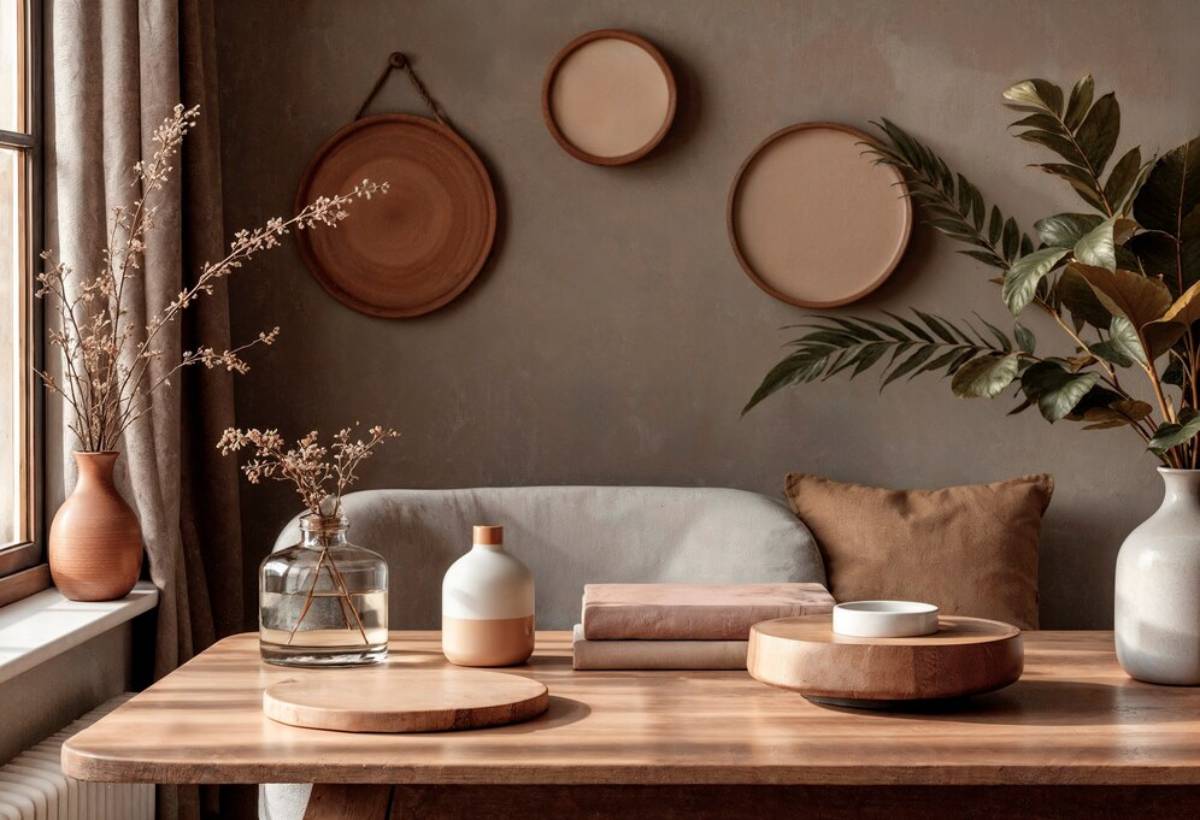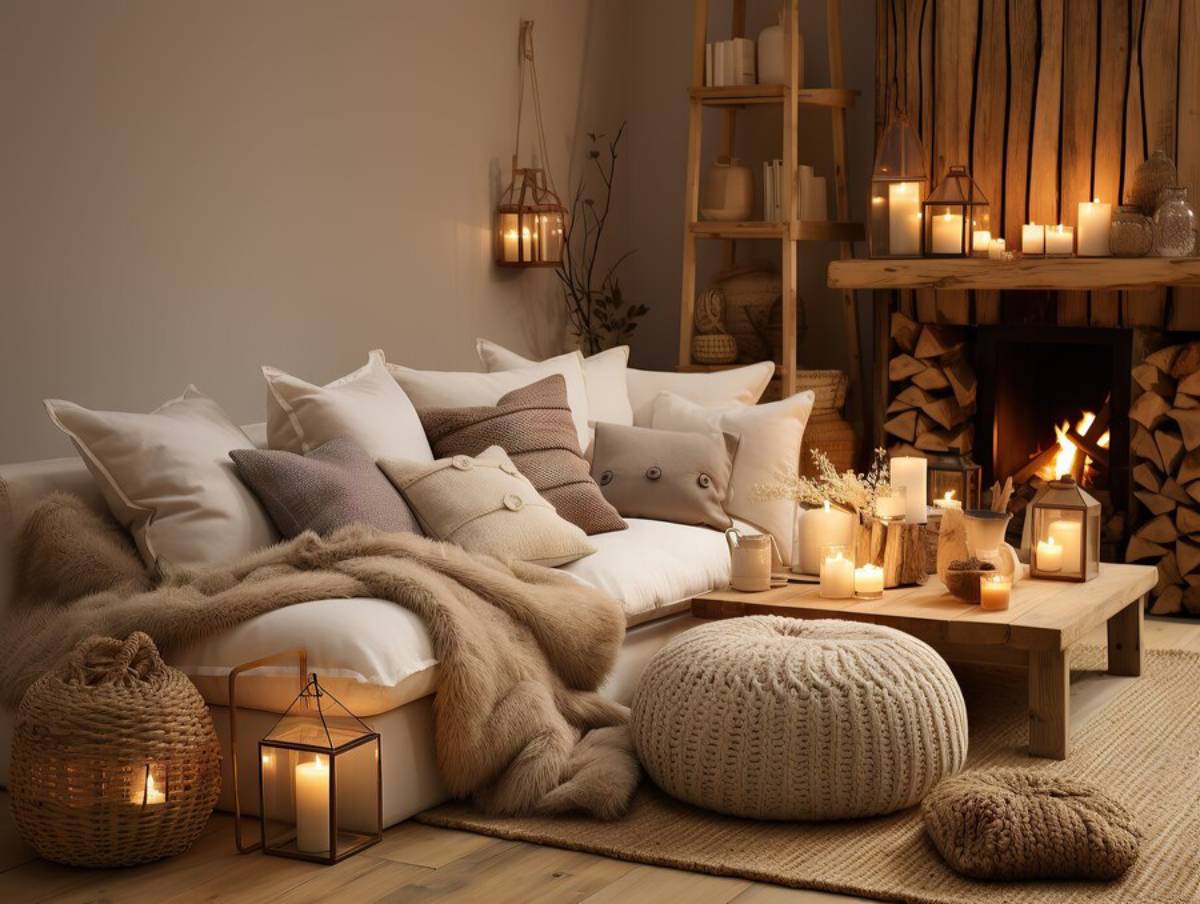
Earthy Tones and Their Place in Scandi Spaces
Scandinavian design has long been admired for its balance of simplicity, warmth, and functionality. Scandinavian style often features clean white walls, light wood floors, and soft grey fabrics. However, its modern evolution now includes a wider, warmer palette. Earth tone interiors are now a key part of modern Nordic design. They provide grounding colour, rich texture, and a natural vibe.
This guide looks at how natural colours are changing Scandi interiors. We’ll show you where and how to use them. Also, we’ll explain why earthy palettes go well with the clean lines and calm style of Nordic design.
The Essence of Scandinavian Style
To appreciate the shift toward earthy tones, it’s helpful to understand the foundational elements of Scandinavian interiors:
- Simplicity and Functionality: Minimalist layouts that prioritise utility without sacrificing beauty.
- Light Maximisation: Use of pale colours and open spaces to combat long, dark winters.
- Natural Materials: Wood, wool, linen, and leather contribute to a tactile, organic ambiance.
- Connection to Nature: A deep cultural value, reflected in both material and aesthetic choices.
Traditionally, this has translated into a palette of white, black, grey, and blonde wood. But as modern Scandi interiors evolve, they’re becoming more personal, layered, and earthy.
Why Earth Tones Work So Well in Scandi Spaces
While at first glance it may seem like a departure, earth tone interiors align beautifully with Scandinavian principles. They are rooted in nature, understated in saturation, and capable of softening minimal architecture with warmth and personality.
Key Benefits:
- Enhance Warmth: Soft ochres, rusts, and clay tones add comfort without visual clutter.
- Promote Calm: Muted natural hues reduce overstimulation, contributing to a grounded environment.
- Connect Indoors to Outdoors: Reflecting the tones of Nordic landscapes—forests, coastlines, moss, stone, and sand.
- Add Dimension: Earth tones layer well with neutrals and bring out the texture in wood, stone, and textiles.
These colours quietly expand the minimalist palette without disrupting its serenity.
A Closer Look at the Earthy Colour Palette
Earth tones are inspired by soil, minerals, clay, and vegetation. They are desaturated, warm, and harmonious.
Core Natural Hues for Scandinavian Style:
- Terracotta: Earthy, rich, and grounding; works beautifully in textiles or ceramics.
- Ochre and Mustard: Soft yellows and golden browns add vibrancy without overpowering the space.
- Sage and Olive Greens: Evoke forest foliage and pair well with ash wood and linen.
- Rust and Burnt Sienna: Deep, reddish-browns that add contrast in an otherwise pale setting.
- Sand, Stone, and Taupe: Neutral, versatile foundations for layering textures.
Used thoughtfully, these colours blend seamlessly into Nordic interiors, offering balance between cool minimalism and natural depth.

Where to Introduce Earth Tones in a Scandinavian Space
Incorporating earth tone interiors doesn’t require a full design overhaul. Begin with accents, then expand as the palette reveals its harmony.
1. Walls
Rather than stark white, consider painting with clay, sand, or warm greige. These muted tones maintain lightness but introduce a sense of intimacy.
Tip: Limewash or mineral paint adds texture and softness for a handcrafted feel.
2. Textiles
Throws, cushions, curtains, and bed linens are ideal for layering in earthy hues. Opt for natural fibres like linen, cotton, and wool for texture.
Example: A stone-grey sofa with ochre and rust cushions creates subtle depth without visual noise.
3. Furniture
Wooden furniture in walnut, oak, or smoked finishes naturally aligns with earthy palettes. Upholstered pieces in olive or clay add an unexpected but elegant twist.
Scandi Detail: Clean lines and tapered legs maintain the minimalist DNA, even in rich tones.
4. Accessories and Decor
Hand-thrown pottery, clay lampshades, jute rugs, and terracotta vases bring handcrafted warmth. Use sparingly for impact.
Nordic Trick: Cluster earthy items in asymmetrical groups on open shelves or sideboards.
5. Floors and Rugs
While pale wood remains a staple, layering it with a warm-toned rug (like rust or taupe) adds contrast and comfort.
Consider: A low-pile wool rug in sand or almond to visually anchor seating areas.
Combining Earth Tones with Classic Nordic Neutrals
The real magic happens in contrast and layering. Scandinavian spaces rarely use earth tones in isolation—they work best when paired with lighter neutrals and natural textures.
| Earth Tone | Pairs Well With |
| Terracotta | Soft white, birch wood, grey linen |
| Sage Green | Charcoal, ivory, pale wood |
| Rust | Off-white, oat, matte black |
| Ochre | Light beige, washed linen, taupe |
| Stone Grey | Warm white, brass, textured plaster |
Use the 60-30-10 rule: 60% base tone (often a light neutral), 30% secondary (muted earthy shade), and 10% accent (deeper hue or texture).
Earth Tones and Seasonal Styling
Another benefit of natural hues is their ability to transition through the seasons.
In Winter:
- Lean into deeper tones like rust, walnut, and charcoal
- Use wool throws, felt accents, and amber-toned lighting
In Summer:
- Shift toward lighter clay, almond, and pale greens
- Add linen textures, ceramics, and fresh greenery
This flexibility keeps the interior dynamic without sacrificing harmony.
Earth Tones and Wellbeing
Scandinavian interiors often prioritise wellness and mindfulness. Earth tones enhance this by echoing biophilic design principles—connecting inhabitants with the natural world.
Emotional Impact:
- Grounding: Brown and terracotta create a sense of safety
- Refreshing: Green tones evoke renewal and calm
- Warming: Ochre and rust promote cosiness and joy
In a culture where home is a haven from long winters and fast-paced modern life, these effects are both intentional and essential.
Earth Tones in Contemporary Nordic Design
Leading Scandinavian designers and brands have embraced earthy palettes in recent years.
Examples:
- Muuto: Uses muted clay, dusty pink, and sage in its lighting and furniture.
- Ferm Living: Offers ceramics and textiles in tones like burnt orange and forest green.
- Frama Studio: Pairs tactile finishes and warm earth hues in minimalist settings.
These brands demonstrate how earthy colours can feel modern, elegant, and wholly Scandinavian.
Practical Tips for Getting Started
- Start Small: Add a rust-toned throw or clay vase to test the palette.
- Mix Finishes: Combine matte, textured, and natural materials for contrast.
- Use Lighting Strategically: Warm light bulbs enhance earthy tones; cool lights may mute them.
- Avoid Glossy Colours: Stick with matte or natural finishes to maintain an organic look.
- Let the Materials Speak: Highlight raw wood, stone, and hand-crafted elements as part of your palette.
Key Takeaway
Earth tone interiors are not only compatible with Scandinavian style—they are elevating it. Integrating natural colours with simple designs creates warm and balanced spaces. These areas feel connected to nature’s rhythms. Earth tones enrich the visual language of Scandi design without complicating it.
Rooted in Nature, Refined by Design

In a world increasingly defined by artificial speed and noise, Scandinavian interiors offer a counterpoint of stillness. Earth tones deepen that effect—bringing a grounded, tactile beauty to modern homes. When used thoughtfully, they offer the perfect complement to the pale woods, open layouts, and quiet craftsmanship of Nordic style.
So embrace the soil, the stone, the forest, and the fire—because the future of minimalism is not just white and grey. It’s rooted in the earth.


